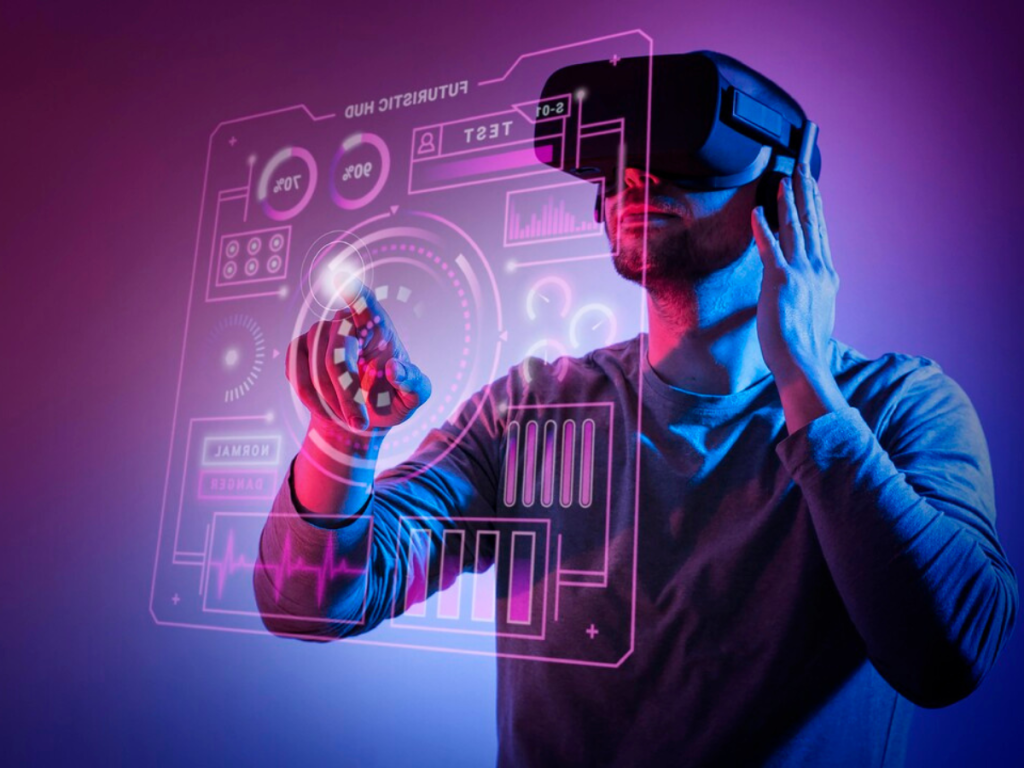Gaming in the Future: A Look at Emerging Trends and Technologies

Prepend to the content

The gaming industry is experiencing an era of unprecedented growth and innovation. What was once a niche hobby has evolved into a global phenomenon that touches every corner of the entertainment world. Whether through consoles, PCs, or mobile devices, gaming has become an integral part of daily life for billions of people worldwide. With the industry valued at USD 162 billion in 2022 and projected to double by 2026, the question arises: What is fueling this explosive growth? What advancements in technology and infrastructure are shaping the future of gaming?
The Rise of Virtual Reality
Virtual Reality (VR) has long captured the imagination of game developers and players alike. The technology transports users into fully immersive virtual worlds crafted from scratch. These worlds are brought to life through sophisticated computer algorithms and accessed using VR headsets.
While early iterations of VR faced challenges, including bulky hardware and limited accessibility, recent breakthroughs have overcome many of these barriers. Headsets are becoming more lightweight, intuitive, and affordable, making VR a viable option for mainstream audiences. The possibilities of VR extend beyond traditional gameplay, offering unique experiences such as virtual tourism, collaborative multiplayer adventures, and even virtual training environments.
As VR becomes more refined, its potential to revolutionize gaming is limitless. Developers are now focusing on creating experiences that minimize discomfort, such as motion sickness, and enhance interaction, allowing players to fully involve themselves in these virtual landscapes.
Blurring the Lines Between Real and Virtual through Augmented Reality
Augmented Reality (AR) is another transformative technology redefining gaming experiences. Unlike VR, which creates entirely separate worlds, AR overlays digital elements onto the real world. A prime example of this technology in action is the global phenomenon Pokémon GO, where players interact with virtual creatures in real-world locations.
AR’s potential is vast, offering opportunities for storytelling, educational gaming, and collaborative gameplay. As AR technology is integrated into everyday devices like smartphones and AR glasses, it is set to become an even more prominent feature in the gaming landscape.
Mobile Gaming
Mobile gaming has become the backbone of the gaming industry, with over 2 billion players globally contributing to its rapid growth. Smartphones and tablets have evolved into powerful gaming devices, offering a diverse array of genres such as MOBAs, RPGs, puzzle games, and more.
Why Mobile Gaming Leads the Market
Mobile gaming has become a universally accessible form of entertainment, as nearly everyone owns a smartphone. Its convenience is unmatched, with games that are easy to download, often free-to-play, and enjoyable in both short bursts and extended sessions. Mobile gaming also offers affordability, with developers benefiting from lower production and distribution costs. The introduction of in-app purchases has created a lucrative revenue model, enabling players to buy special items, upgrades, or battle passes while developers monetize their games without physical distribution. This dual revenue stream supports both indie developers and major studios, driving further growth as 5G networks expand to enable faster downloads and seamless multiplayer experiences. Meanwhile, next-generation consoles like the PlayStation 5, Xbox Series X, and enhanced versions of the Nintendo Switch represent a significant leap forward in gaming technology. These systems feature faster load times powered by SSDs, enhanced graphics with ray tracing and high-resolution textures, and improved interactivity through advanced controllers like the PlayStation DualSense, offering haptic feedback and adaptive triggers. Subscription services such as Xbox Game Pass and PlayStation’s extensive libraries are also reshaping the industry with gaming-as-a-service models, allowing players access to hundreds of titles for a subscription fee. Additionally, iterative upgrades like the PlayStation 4 Pro and Nintendo Switch OLED ensure these consoles remain competitive, fostering continuous innovation.
How Do Game Streaming Platforms Monetize Play?
Game streaming has emerged as a central pillar of modern gaming culture, with platforms like Twitch, YouTube Gaming, and Facebook Gaming enabling players to share their gaming experiences with live audiences. These platforms foster vibrant communities while offering streamers opportunities to earn income through donations, ad revenue, and subscriptions. This ecosystem has given rise to professional gamers and content creators who monetize their streams and promote new games to their audiences. Popular titles such as Fortnite and League of Legends dominate these platforms, highlighting the social and financial potential of game streaming. Beyond entertainment, streaming serves as a powerful marketing tool, driving player engagement and influencing purchasing decisions, further solidifying its role in the gaming industry.
Is Cloud Gaming the Future of Access?
Cloud gaming is widely regarded as the future of video games due to its innovative approach to accessibility and convenience. Unlike traditional gaming, which requires physical hardware or lengthy downloads, cloud gaming allows users to stream games directly from remote servers. This model offers several key benefits, including device flexibility, enabling players to access games on any device—whether a PC, console, smartphone, or tablet. The elimination of downloads means games can be played in real-time without the need for extensive storage space. Additionally, processing power is handled by servers, ensuring players always experience the latest technology without investing in hardware upgrades. Enhanced security is another advantage, as remote storage minimizes piracy risks and bolsters data protection. Platforms like Steam by Valve Corporation are at the forefront of this trend, offering vast libraries of games playable across multiple devices. With its flexibility and scalability, cloud gaming is poised to play a pivotal role in shaping the future of the gaming industry.
Artificial Intelligence: Smarter, More Interactive Games
Artificial Intelligence (AI) has been an integral part of gaming since its inception, but recent advancements have elevated its importance. Modern AI enhances everything from gameplay mechanics to storytelling, creating more immersive and dynamic experiences.
Applications of AI in Gaming:
Artificial intelligence is revolutionizing the gaming industry by creating smarter, more immersive experiences. Non-player characters (NPCs) now display lifelike behaviors, adapting to player strategies and providing realistic interactions that enhance gameplay. Procedural storytelling, driven by AI, generates dynamic narratives that evolve based on player choices, ensuring that each playthrough feels unique. Additionally, some indie developers are leveraging AI-driven systems to allow players to customize character personalities, resulting in tailored and deeply personal gaming experiences. As AI continues to advance, its ability to craft smarter and more engaging worlds solidifies its role as a cornerstone of modern game development.
The gaming industry is on the verge of a transformative era. From the immersive experiences of VR and AR to the accessibility of mobile and cloud gaming, the future promises innovation at every level. Advanced AI, next-generation consoles, and game streaming platforms are pushing the boundaries of what gaming can achieve, creating a more inclusive and interactive ecosystem for players and developers alike.
As technology continues to evolve, gaming will not only remain a dominant force in entertainment but will also shape how we interact with digital content and with each other. The possibilities are endless, and the journey has only just begun.
The post Gaming in the Future: A Look at Emerging Trends and Technologies appeared first on G2G News.



